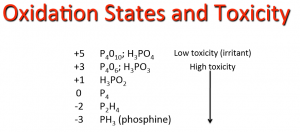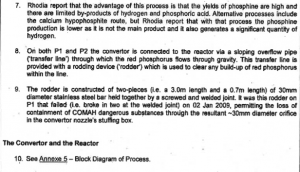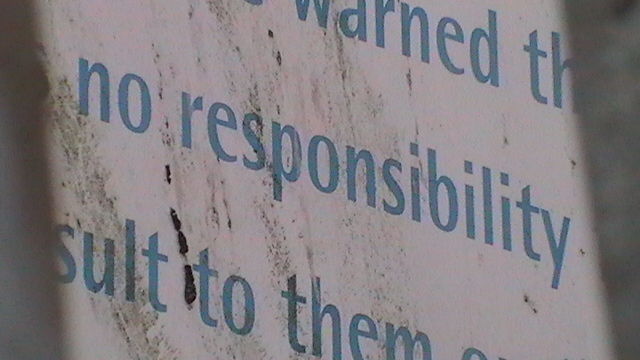Some time back I put in a freedom of information request to The Health and safety executive concerning a serious fire at Trinity Street in 2009.
This involved the release of a phosphorus vapour cloud and associated breakdown products over Langley which closed local businesses and confined residents living near to the chemical factory indoors.
The investigation into this toxic assault and subsequent prosecution of the firm took a ludicrous amount of time to conclude, and throughout the period of the protracted case (Seven years), I attempted to get to the bottom of what exactly occurred. It was disappointing that when the HSE finally released the report I was after, they blanked out large parts of it making it unreadable.
According to the HSE there were caveat exemptions to their redactions, but these were highly contentious and so I challenged them with the Information Commissioners office. In particular the ludicrous assertion of International relations, defence, national security or public safety (regulation 12(5)(a)) of the FOI Act being compromised by the release of the information. The EU had already been provided with some of the key information by the HSE as I pointed out, yet bizarrely the HSE did not want to provide it to a Sandwell British citizen.
I am pleased to report that the Information commissioner wrote to the HSE who reviewed their original response, and so we now get a much fuller understanding of what happened that day from a technical perspective- as well as the crucial information such as what was released and in what quantities. We also learn of the total balls up by Rhodia in the manner in which they dealt with the unfolding incident, and their subsequent attempted distortions of the truth. This speaks volumes about the chemical industry itself and its toxic deceptions.
HERE IS THE NEW LESS REDACTED VERSION OF THE HSE REPORT.
THE BASIC FACTS
“There was an uncontrolled release of at around 12.06 hrs on 02 January 2009 at the premises of Rhodia UK Ltd (“Rhodia”), Trinity Street , Oldbury West Midlands (i.e Top tier COMAH site) of approximately
(i) 37kg of phosphine (i.e COMAH named dangerous substance); and
(ii) 179kg of Phosphorus vapour (i.e COMAH dangerous substance)
2. Upon contact with air these substances spontaneously ignited to produce approximately
409kg of phosphorus pentoxide (i.e COSSH substance hazardous to health).
3. This would then react with water vapour in the air to produce approximately
564kg of 100% phosphoric acid (i.e COSSH substance hazardous to health.)
To clarify the table below shows how oxides of phosphorus are related to toxicity.
It is worth at this point reading the facts about phosphine as seen by the health protection agency at the time, its toxicity and health effects.
Phosphine_properties_incident_management_toxicology
“Phosphine
Toxicological overview
Key Points
Kinetics and metabolism
Inhaled phosphine is absorbed rapidly from the lungs and distributed round the body Inhaled or ingested zinc, aluminium and magnesium phosphides release phosphine into the respiratory tract and stomach; zinc phosphide can be absorbed intact from the gut Dermal absorption of phosphine or phosphides is not considered a significant route of exposure. The majority of absorbed phosphine is excreted in exhaled air; minor amounts are metabolised and excreted in urine as hypophosphite and phosphate
Health effects of acute exposure
Phosphine is acutely toxic; exposure to high levels cause immediate effects Early symptoms of acute phosphine or phosphide exposure are non-specific and include respiratory problems, cough, headaches, dizziness, numbness, general fatigue and gastrointestinal disturbance (pain, nausea, vomiting and diarrhoea) . Effects of exposure to higher levels of phosphine, the onset of which may be delayed by several days or more, include pulmonary oedema, convulsions, damage to the kidney, liver and heart, and death
Health effects of chronic exposure
Symptoms of chronic exposure include: anaemia, bronchitis, gastrointestinal disorders, speech and motor disturbances, toothache, weakness, weight loss, swelling of the jaw, mandibular necrosis and spontaneous fractures . Phosphine is genotoxic in vitro but is not considered to be mutagenic in vivo and has not been associated with cancer. Phosphine is unlikely to cause reproductive or developmental effects Repeated exposure may lead to cumulative effects .”
We learn more about Rhodia and their workforce, which over the years has dwindled from what it once was.
So they employed 250 people over ten production plants at the time of this incident.
Rhodia/Solvay have two phosphine plants at their Trinity Street site- these are known as P1 and P2. I will detail the history of production of this chemical at the site, as well as what the HPA thought about it at the time of the planning application in an upcoming page. The fire we learn from this report occurred at the older plant built by Albright and Wilson in 1981. The planning application was titled DC/10316 and was approved by Sandwell council in May 1980. Detail about the whole production of this facility given to SMBC by Albright and Wilson at that time can be read HERE.
Rhodia uses phosphine as an intermediate in their manufacture of THPS and THPC. Both plants use the same method of reacting white phosphorus with steam.
The report appears to show confusion amongst the Rhodia employees as to what to do and also the lack of sounding of the alarm due to them believing it to be an “irritant” gas rather than the “toxic” gas which it was. They also appeared clueless as to the incident spreading off site.
We learn how Rhodia subsequently attempted to underestimate the release of phosphine gas and how the HSE did not agree with their figure. We are fully aware of how Rhodia also tried to play down the significance of the amount of white phosphorus detected in birds their company and Albright and Wilson had poisoned at Rattlechain. This example shows how section 12 (5) (a) was again misused but only served to conceal how much this company had underestimated the release of their gas. How is this a security issue or likely to put the public at risk when it is the Trinity Street blighters themselves that are the risk?
The report goes into great technical detail about the rodder assembly, interviews with several Rhodia staff and a kidology game involving legal representations and how they attempted to learn more about those people who had claimed to suffer off site effects from the chemical.
I do not wish to go over all that here as some of it was already unredacted, except to say how is it possible that a hospital had no record of people who entered and were treated under its care? What exactly were Sandwell hospital and Wednesbury and West Bromwich Primary care trust doing here?
I have some serious concerns about the way this health authority appear to conveniently loose this information, as well as this gem apparently from West Midlands fire service.
I have long been concerned about the relationship between these different agencies and this private multinational chemical company- particularly the links between West Midlands Fire service and Albright and Wilson and then Rhodia. I am aware that they have “trained” with the professionals onsite on many occasions, though when it came to the crunch on this occasion, as is revealed, they really are piss poor amateurs. The public had every right to know about the ongoing incident, and it is not the job of the fire service or anyone else to supress information to protect this chemical company from scrutiny of its activities and what it is doing on site. In fact the HSE (Kay Brookes), operated in a similar way by originally blanking out this report as described above. Just why are they all protecting a business entity and not the public?
I also have concern that at numerous times, the still unnamed individual at Sandwell council and its joke “resilience unit” (see later in this post), as well as the local MP- (obviously Adrian Bailey), asked repeatedly about the progress of the report and when the HSE were going to release it- this before the prosecution. I was of course asking the same myself through FOI requests, but at least I know that this was not to give the firm at the centre of this any favour. Now this could well have been in the “public interest” role on their part, yet why am I left believing that they were only asking for this because Rhodia wanted to know more about the thrust it would be taking, and were asking questions directly of the HSE themselves- particularly whilst deliberately delaying and procrastinating about witness statements, records the HSE wanted and blather about their “stressed” workers involved in the incident.
Here are frequent visitor to Trinity Street Adrian Bailey and Sandwell council’s requests to the HSE for more information in chronological order as set out and detailed in the report.
THE TRUE FACE OF RHODIA
The facts for those who defended this environmental sham company and the industry itself are laid bare towards the end of the report. Here is what we learn.
- They speak in tongues of semantic bullshit
- contradicting information and statements
- “sensitive climate”- linking their appalling toxic assault on Oldbury to the non existent one from any terrorist incidents in the area in order that they do not “alarm” the public from a real risk caused by THEM.
- Just lying about past chemical release incidents at their site
- Key personnel at Rhodia lying to the HSE in their investigation
- They had also previously been prosecuted and fined for not informing the environment agency of a spill of polyphosphoric acid.
- Not following their own agreed procedures
- Used water to tackle a phosphine fire“They do not however, appear to have considered the risks of water entering the converter and/or otherwise contacting the phosphorus/phosphine.”
- The list of vulnerable premises that Rhodia put at risk included two superstores and a school- yet “Rhodia state they did not contact vulnerable premises because they reached a consensus with WMFS that neighbours were not likely to be affected but that the police did make contact.”
- “When asked what relevant information they provided to the police (or any other relevant outside agency ) for them to provide to vulnerable premises, and at what time, they responded that the police had their own plan of action which was implemented in their own timeframe.”
- “When asked whether the substances contained in the cloud that went offsite were dangerous and/or hazardous to health , for example to vulnerable persons , Rhodia referred to their above responses and provided no further information.”
- I am fully aware myself of the health and safety managers at Rhodia’s lack of duty of care and giving relevant information when I had been exposed to material at Rattlechain lagoon. They also have the same track record for failing to inform the Veterinary laboratories agency of the threat of exposure to their staff about white phosphorus during post mortems- which they were also quick to blame on anything else than their chemical cover up.
One can only conclude by their disingenuous actions, cover- ups, uncooperative stalling , blaming other agencies that this is NOT the company that likes to think of itself as being “at the heart of the community” that unfortunately surrounds it.
The so called “consultation zone” surrounding this site is shown at the link below.
Before the investigation had concluded and they had been taken to court, “rhodia” conveniently disappeared from public view in the area with the change to the name “Solvay” in August 2014. A new site director conveniently appeared, with the other failure , whose name is still redacted in this report departing to their site in Halifax.
It is incredible that Tom Dutton , Health and safety director survived this fiasco- perhaps he knew too much.
But still with the same workforce, heavily criticised processes and phosphine plants, it was business as usual with them pumping out propaganda calendars through people’s doors- with the dramatically ironic statements about what they should do in an “unlikely emergency”.
One is reminded at this point of The Environment Agencies 1997 audit of this factory site where it was found that managers pay bonuses were linked to environmental incident performance and the fact that this may persuade managers to not report incidents. Was this still the case at Rhodia, and is it still the case at Solvay?
“Matters which have potential for impact on the environment are duly addressed and the internally set environmental targets are met. Environmental issues form part of each manager’s formal objectives; for example, the performance of individual managers is assessed against compliance with the IPC authorisations. The Audit Team expressed concern that this could in effect discourage the reporting of incidents, but were assured that the reporting system is completely open and without even implied penalty. “
There is also the matter of Rhodia’s failure to work with and later to try to pass blame onto the other professional services involved in their incident.
Take a look at this document below from the time of the fire which Sandwell council published concerning ” resilience“.
And who should be one of their so called “partner agencies” together with West Midlands Fire Service, Wednesbury and West Bromwich Primary care trust, Sandwell hospital and the HPA – well none other than that “fine” chemical company being investigated – Rhodia. Well what a turn up that is folks- I suppose they have friends in high places when the shit hits the fan, or should that be the cut and shut rodder hits the phosphorus?
Was this and is this chemical company at all competent to be on such a group? At the time of this incident and their behavioural actions, Rhodia were not fit at all.































